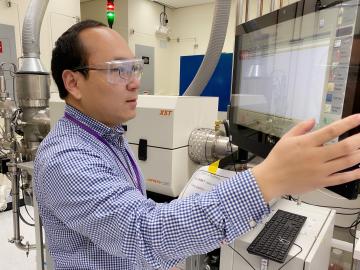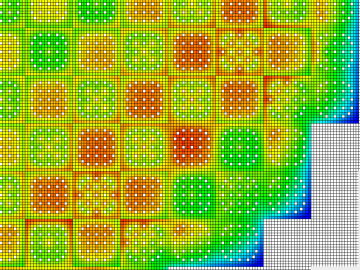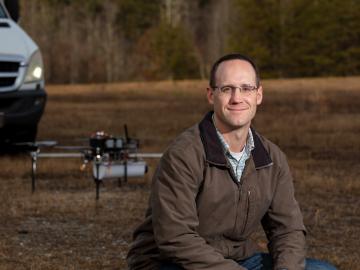
Filter News
Area of Research
- Advanced Manufacturing (2)
- Biological Systems (1)
- Biology and Environment (25)
- Computational Biology (1)
- Computational Engineering (1)
- Computer Science (1)
- Electricity and Smart Grid (1)
- Energy Science (41)
- Fuel Cycle Science and Technology (1)
- Fusion and Fission (30)
- Fusion Energy (5)
- Isotope Development and Production (1)
- Isotopes (9)
- Materials (48)
- Materials for Computing (2)
- National Security (28)
- Neutron Science (26)
- Nuclear Science and Technology (26)
- Sensors and Controls (1)
- Supercomputing (39)
News Type
News Topics
- (-) Biomedical (61)
- (-) Grid (50)
- (-) Machine Learning (53)
- (-) Nuclear Energy (99)
- (-) Physics (65)
- (-) Security (30)
- 3-D Printing/Advanced Manufacturing (108)
- Advanced Reactors (25)
- Artificial Intelligence (114)
- Big Data (58)
- Bioenergy (95)
- Biology (108)
- Biotechnology (36)
- Buildings (50)
- Chemical Sciences (72)
- Clean Water (19)
- Composites (24)
- Computer Science (180)
- Coronavirus (37)
- Critical Materials (17)
- Cybersecurity (31)
- Education (5)
- Element Discovery (1)
- Emergency (3)
- Energy Storage (80)
- Environment (162)
- Exascale Computing (64)
- Fossil Energy (7)
- Frontier (61)
- Fusion (56)
- High-Performance Computing (114)
- Hydropower (6)
- Isotopes (55)
- ITER (6)
- Materials (113)
- Materials Science (120)
- Mathematics (9)
- Mercury (9)
- Microelectronics (4)
- Microscopy (44)
- Molten Salt (5)
- Nanotechnology (50)
- National Security (81)
- Neutron Science (139)
- Partnerships (67)
- Polymers (25)
- Quantum Computing (48)
- Quantum Science (80)
- Simulation (54)
- Software (1)
- Space Exploration (16)
- Statistics (3)
- Summit (62)
- Transportation (61)
Media Contacts

About 60 years ago, scientists discovered that a certain rare earth metal-hydrogen mixture, yttrium, could be the ideal moderator to go inside small, gas-cooled nuclear reactors.

Radioactive isotopes power some of NASA’s best-known spacecraft. But predicting how radiation emitted from these isotopes might affect nearby materials is tricky

The Department of Energy announced awards for 10 projects with private industry that will allow for collaboration with DOE national laboratories in accelerating fusion energy development.

The inside of future nuclear fusion energy reactors will be among the harshest environments ever produced on Earth. What’s strong enough to protect the inside of a fusion reactor from plasma-produced heat fluxes akin to space shuttles reentering Earth’s atmosphere?

It’s a new type of nuclear reactor core. And the materials that will make it up are novel — products of Oak Ridge National Laboratory’s advanced materials and manufacturing technologies.

As CASL ends and transitions to VERA Users Group, ORNL looks at the history of the program and its impact on the nuclear industry.

Oak Ridge National Laboratory researchers have developed artificial intelligence software for powder bed 3D printers that assesses the quality of parts in real time, without the need for expensive characterization equipment.

Horizon31, LLC has exclusively licensed a novel communication system that allows users to reliably operate unmanned vehicles such as drones from anywhere in the world using only an internet connection.

Pick your poison. It can be deadly for good reasons such as protecting crops from harmful insects or fighting parasite infection as medicine — or for evil as a weapon for bioterrorism. Or, in extremely diluted amounts, it can be used to enhance beauty.

After its long journey to Mars beginning this summer, NASA’s Perseverance rover will be powered across the planet’s surface in part by plutonium produced at the Department of Energy’s Oak Ridge National Laboratory.


